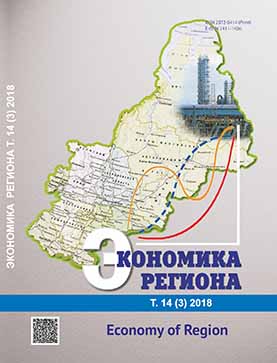Этносоциоэкосистемный подход к оценке жизнедеятельности коренных малочисленных народов Севера
Ethnic Social and Ecosystem Approach to the Evaluation of the Lifehoods of Small Indigenous Peoples of the North
Author(s): Vladimir Grigoryevich Loginov, Margarita Nikolayevna Ignatyeva, Valery Vasilyevich BalashenkoSubject(s): Social Sciences, Economy
Published by: Институт экономики Уральского отделения Российской академии наук
Summary/Abstract: The regions of the Russian North occupy 70 % of the territory of the country. These areas considerably differ in the level of socio-economic development. Khanty-Mansi Autonomous Okrug (KhMAO) — Yugra is the most developed industrial region of the Russian North. KhMAO is also the main supplier of oil and gas resources. Thus, KhMAO is the focus of the research. The purpose of the paper is to evaluate how the traditional natural resource management transforms on the developing territories and to assess its impact on the lifehoods of the Small Indigenous Peoples of the North (SIPN). The study is based on the hypothesis of the negative impact of industrial development on the territory of the traditional residence of SIPN and, accordingly, on their social and economic development and the quality of life. We have found certain intraregional distinctions of this territorial subject of the Federation. These differences are caused by the features of natural and resource potential, transport security and geographical location. It is true for both the separate municipal entities and larger territorial and administrative sub-regions. We have identified the most acute problems in the development of traditional natural resource management on the territories of active industrial and transport development. The main industries there are reindeer breeding and fishery. We also identified the problem of the northern legislation set up to protect the rights of SIPN. The paper considers the evolutionary changes in the formation of the institution of ancestral domains and the territories of traditional natural resource management, as well as the practice of coordinating the interests of subsoil users and SIPN’s representatives with the help of economic agreements. We have demonstrated the problem associated with the difficulties of social adaptation of SIPN. We have analyzed the ecological situation and current state of traditional environmental management to compare the conditions of municipal entities of the region. Using ethnic social and ecosystem approach, we have evaluated the lifehoods of SIPN in the developed and poorly developed regions of KhMAO. The results of the assessment support the hypothesis of the research. The findings of the research can be used when working out on the roadmap of the development of traditional industries and SIPN in the municipal districts of various development level.
Journal: Экономика региона
- Issue Year: 14/2018
- Issue No: 3
- Page Range: 896-913
- Page Count: 18
- Language: Russian

